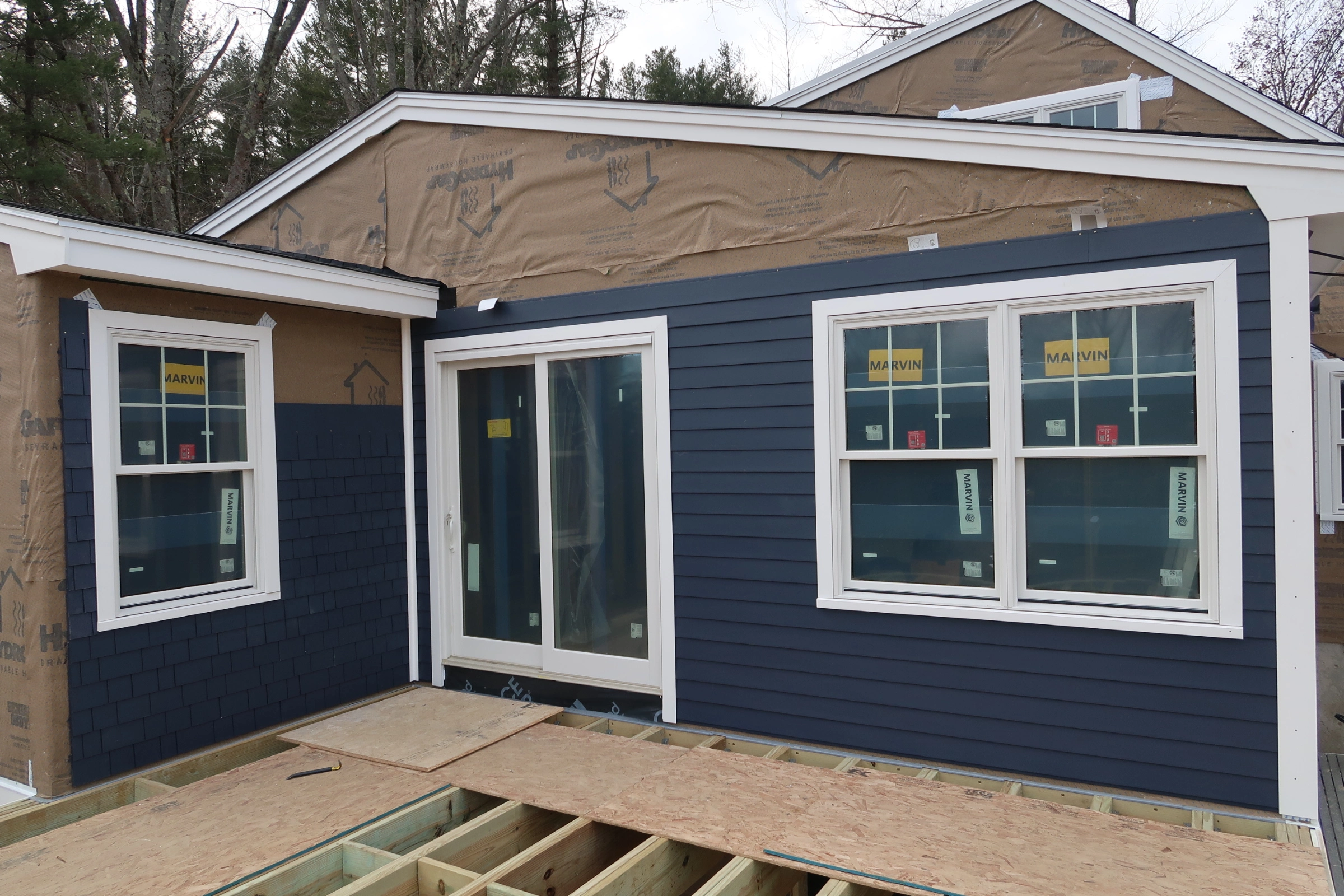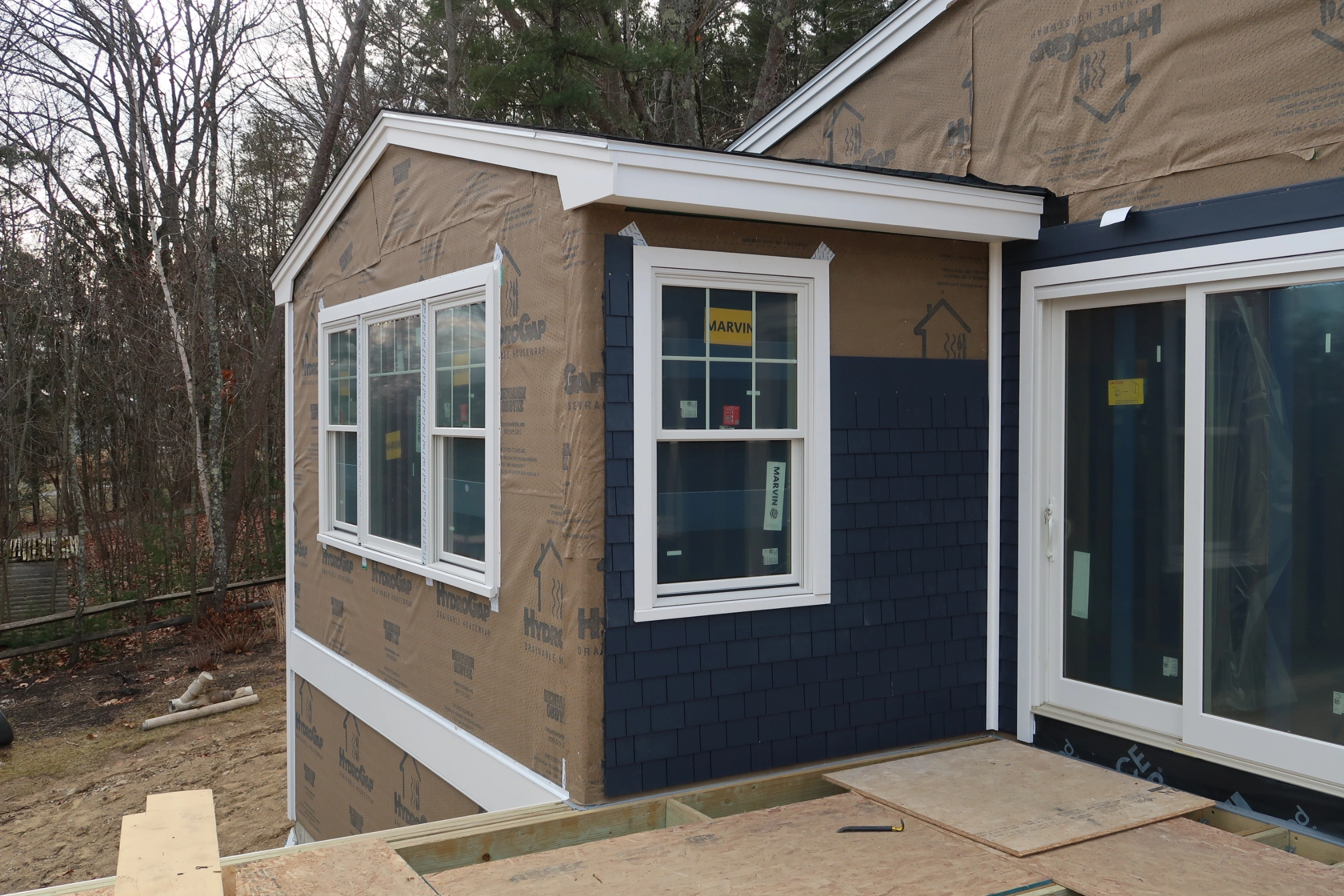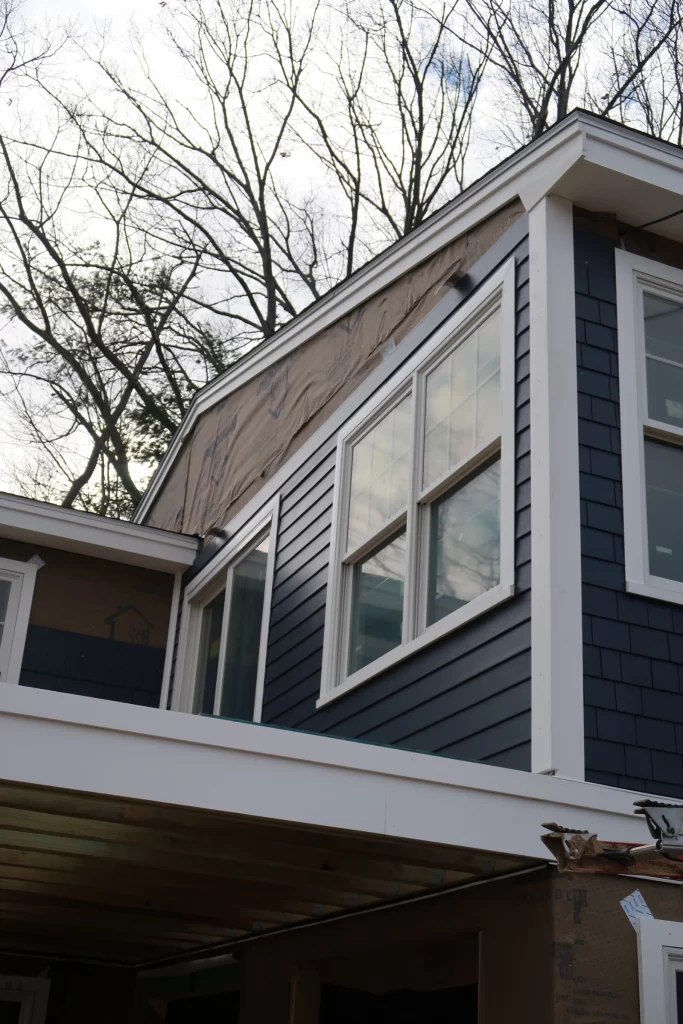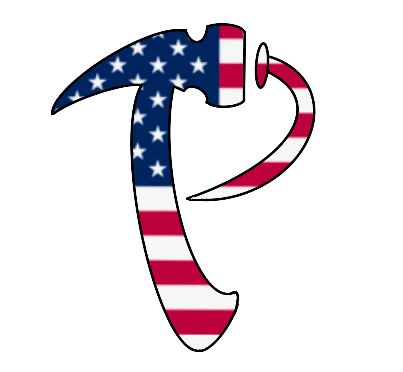
Fiber Cement Siding
What is Fiber Cement Siding?
Fiber cement siding is one of fastest growing siding options on the market in terms of popularity because of its durability, low maintenance properties and aesthetic appeal.
This siding material is made from a mixture of cement, sand, water and cellulose fibers. Each component has different properties that contribute to the overall performance of the product. The cement is used for strength, the sand for stability, while the cellulose fibers are for flexibility to prevent warping or cracking. Along with its durable performance, fiber cement siding comes in a variety of different styles and colors to satisfy the design element that you may be looking for.
How is it Made?
Fiber cement siding is made from mixing all of its components (cement, sand, water and cellulose fibers), which then are placed under pressurized steam and formed into sheets or panels. Those sheets and panels are then shaped into different style products that are primed or painted and ready to be installed.
Are There Different Styles?
Fiber cement siding is manufactured to mimic different styles of wood siding, such as clapboard or shake siding. Typically, they can have a woodgrain or smooth finish, and can have a factory paint applied so that painting doesn’t have to be done on site. Not only is fiber cement offered as a siding product, but you can also get exterior trim products.
Benefits
- Durability:
- Fiber Cement Siding is a durable material that is designed to withstand weather, as well as insects and pests. It is a water resistant material that protects against moisture from the elements. The composition of the product is unappealing to animals that generally can wreak havoc on siding products.
- Low Maintenance:
- Although not nearly as important as maintaining a wood siding material, there is still some maintenance required. It does not sustain damage from moisture and pests, so the only real maintenance required is an annual cleaning and a repainting every 10-15 years.
- Fireproof:
- Another added benefit of this siding material is that it is non-combustable. This means that it will not ignite from a flame, which helps protect the exterior of your house from another potential hazard.
- Aesthetic Appeal:
- Because of the many different styles and color options, fiber cement siding can be a great option to boost the curb appeal of your home.
Drawbacks
- Moisture Absorbent:
- Although it is designed to be moisture resistant, if not installed properly, the siding can absorb moisture over time, which can lead to problems in the future.
- Factory Paint:
- Most manufacturers offer a 10-15 year warranty on their factory applied finish. However, depending on where you live and certain weather conditions, you may find yourself having to refinish it sooner than that.
- Cost:
- Fiber cement siding is not the cheapest option and can be a significant investment to install on your house.

How Much Does Fiber Cement Siding Cost Compared to Other Siding?
Fiber cement siding is not the most expensive siding product, but it is not the least expensive either. Generally it is less expensive than brick, stone, and some wood products, equally as expensive as composite siding, and more expensive than vinyl. That being said, anyone that is getting this siding installed on their house should expect a substantial investment. If you are looking to save a little money on your siding project, fiber cement may not be the option for you.
How Much Does it Cost to Install?
There are two factors to consider when getting Fiber Cement Siding installed on your house: Materials and Labor. The general pricing for fiber cement siding installation is as follows:
- Materials: $6-$8 /sqft
- Labor: $6-$9 /sqft
This is just a general guideline for someone who may be thinking of getting fiber cement siding installed on their house. Other work such as Siding Removal, Repairs, Clean Up and Disposal are not included in this price. Pricing is based on sqft of wall coverage, not the overall sqft of the house.
Fiber Cement Installation Practices
The installation process is very similar to that of wood and composite siding. First we start with the storage of materials. Fiber cement siding materials need to be stored on a flat surface, not directly touching the ground. In addition, the materials need to be kept dry until they are ready for installation. When installing, a circular saw with a diamond tipped blade must be used to cut the siding as regular saw blades will dull very quickly and cause rough, unclean cuts. All cut edges must be primed or painted with a color match paint to seal all cuts and prevent moisture from entering the material. All siding-to-trim seams must be sealed with a compliant sealant to prevent moisture. Along with those installation practices, it is important to make sure proper flashing pieces are installed wherever required.
If installation practices used are not to the manufacturers standards and specifications, it voids any warranty that the product may have and the product will not perform as intended.
How Do I Maintain this Siding?
As stated above, fiber cement siding is a low maintenance siding option. General maintenance includes yearly cleanings and inspections. You can clean fiber cement siding by spraying it down with a garden hose or pressure washing it with a lower pressure setting. For tougher areas, soapy water and a gentle scrubbing brush should suffice. Avoid using cleaners with harsh chemicals, as they can damage the paint finish.
What is the Return on Investment (ROI)?
Replacing your home’s siding can have a very good ROI when selling your house. In fact, it is one of the top home improvement projects in terms of ROI. According to the 2023 Remodeling Costs Vs. Value Report, installing fiber cement siding on a home yields an average of 88.5% ROI, making it one of the top home improvement projects to take on.
What Brands of Fiber Cement Siding Does Pafford Construction Install?
The only brand of fiber cement siding that we offer to install is James Hardie fiber cement siding, also known as Hardie Board siding. James Hardie is the leading manufacturer of this material and one of the most popular brands on the market. Because of this it is the easiest fiber cement product to source.
Conclusion
Fiber cement siding is one of the top siding options on the market today. It is a durable, low maintenance product that provides a great curb appeal to any home. Multiple different styles and colors give homeowners different options to choose from and it is one of the top home improvement projects that offers a significant ROI.

